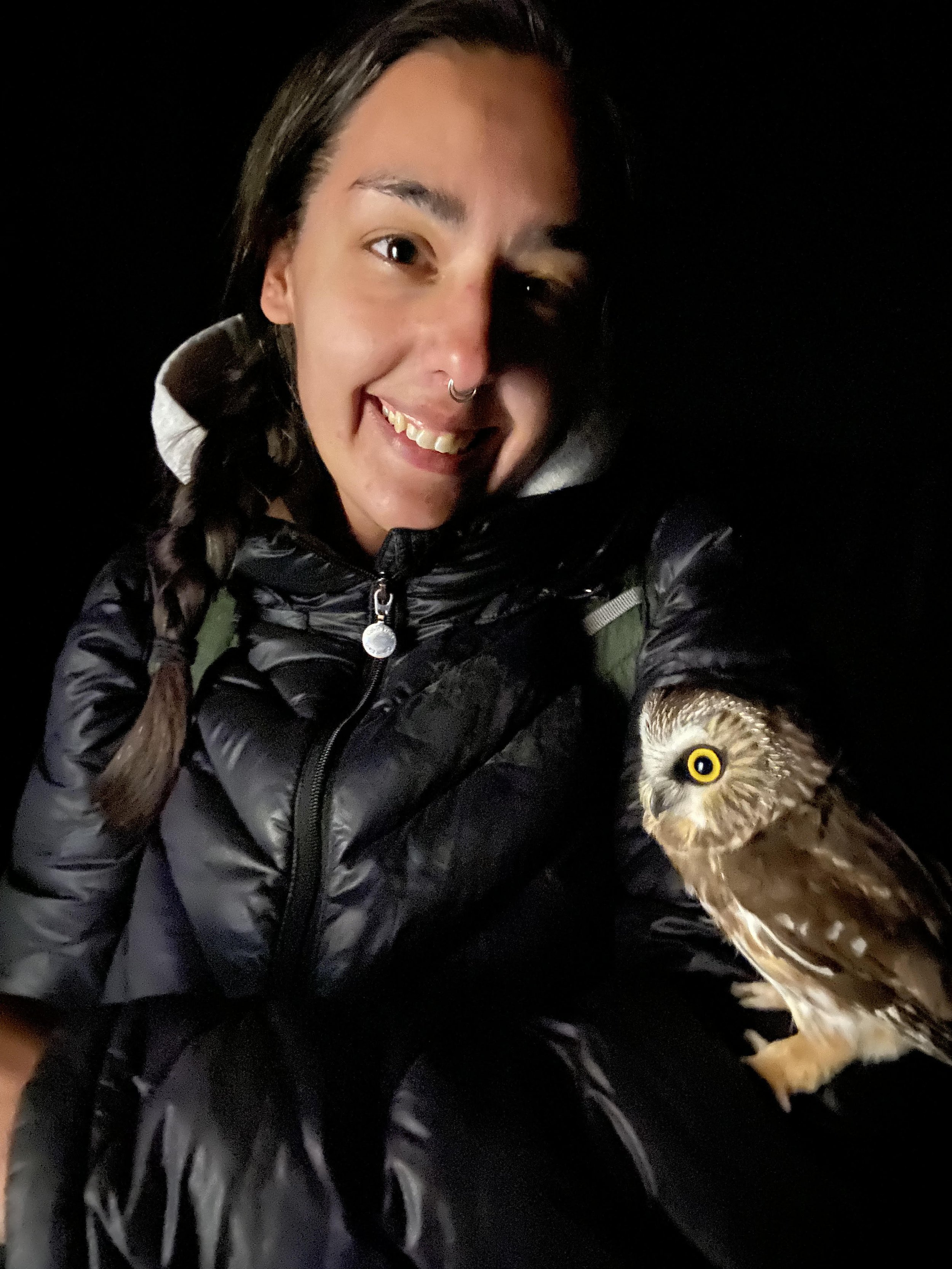By Amylynn Ephraim, serving with Canaan Valley National Wildlife Refuge
Amylynn with a saw-whet owl
On a cold clear night, when the moon is dark and a north wind blows, northern saw-whet owls take wing for their fall migration. Bird banders across the US and Canada set up their nets in strategic locations and watch the weather closely for good conditions, checking their nets regularly for birds.
Once an owl is safely removed from the net, its wings, tail feathers, beak length, and mass are measured; the amount of pit fat (subcutaneous fat under the wing) present is scored on a standardized scale, and the keel (part of the breastbone) is felt to determine the amount of pectoral muscle present, which indicates the body condition of the bird. Sex can be determined using the wing & mass metrics, with the females of the species being larger than males. But age determination may be the most fascinating part of the night: a UV light is shown over the underside of the wing and depending on the age class of the bird, different feathers will fluoresce bright pink! Newer feathers will fluoresce brighter than older feathers, so age can be determined by molt patterns. After these measurements (and maybe a few photos) are taken, the licensed bander attaches a USGS-assigned identification band to one leg and releases the bird.
AmeriCorps member Bela with a saw-whet owl
Birders of a feather flock together, utilizing apps and networks to share information. Experienced bander LeJay Graffious uses eBird and Project OwlNet to share his findings. This year, 46 saw-whets were captured on the refuge, 3 of which were recaptures from other banding stations, as well as 2 barred owls, a native predator of saw-whets. As the years progress and more birds are captured and banded, it will be interesting to see recapture rates and movement of individuals. Thank you to LeJay and his volunteers for sharing this experience with us; this was certainly a highlight of my second AmeriCorps year!
LeJay holds a barred owl, a predator of saw-whets





